Name Fabienne Verdier | Books Between Heaven and Earth | |
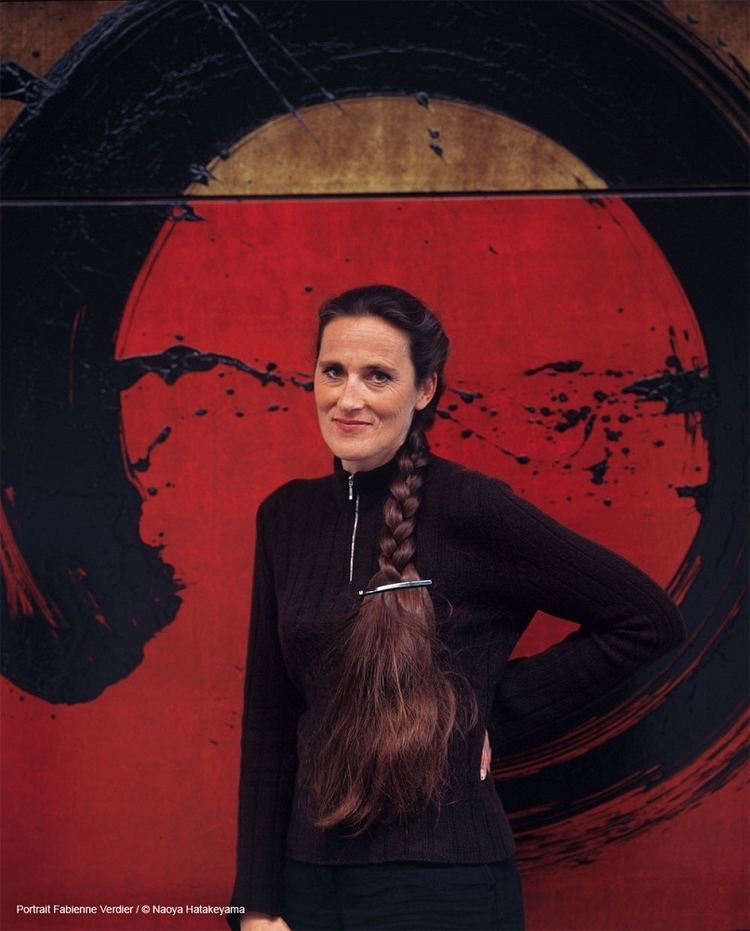 | ||
Radio palettes fabienne verdier
Fabienne Verdier (born 1962, Paris, France) is a painter who lives and works in France.
Contents
- Radio palettes fabienne verdier
- Fabienne verdier majunga tower
- Career
- Creative process
- Solo
- Group
- Public collections
- Books and films
- References
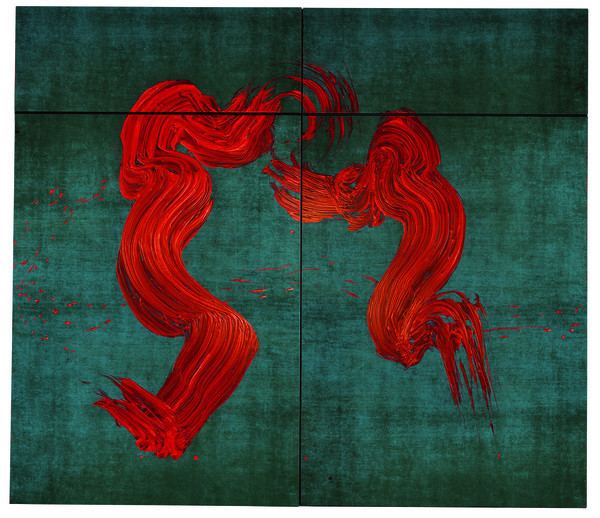
Fabienne verdier majunga tower
Career
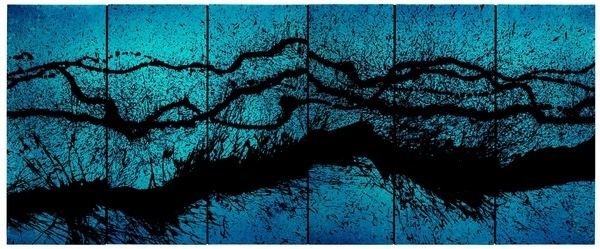
Fabienne Verdier's artistic path has taken her through successive phases of research, all focused on her fundamental areas of interest, including the dynamism of forces of nature, the instantaneous and enduring, and incessant movement. By adopting new tools and ever-larger brushstrokes, she proposes to enable viewers to better access the infinite world of energy and transformations she extensively explores.
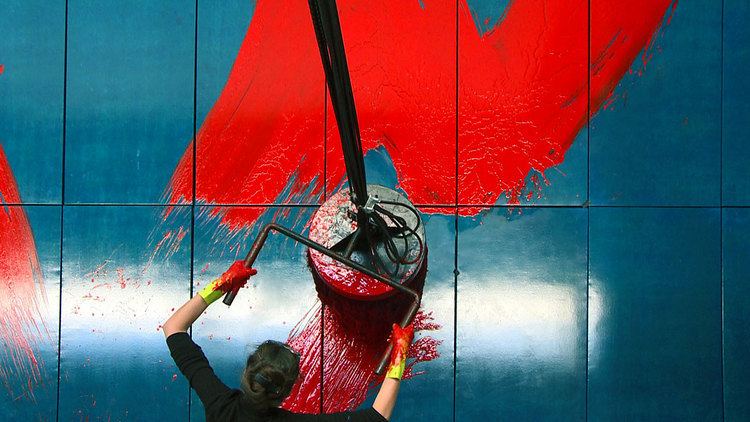
Her latest research into the dynamics of forms has led her to explore possible links between music and painting, specifically between pictorial and sonic lines. In July, 2017, at the invitation of the Festival d'Aix-en-Provence and its Académie, Verdier set up an experimental studio/laboratory in painting and music, with the goal of creating a new 360° immersive film experience for public viewing at the 2018 edition of the Festival. As an artist in residence at the Juilliard School in New York City for several months in 2014, she worked with some of its foremost faculty members, including Darrett Adkins, Kenny Barron, William Christie, Philip Lasser and Edith Wiens, as well as with many students. A documentary by filmmaker Mark Kidel relating the extensive experiments carried out in Verdier’s studio-laboratory at Juilliard was released in 2016.
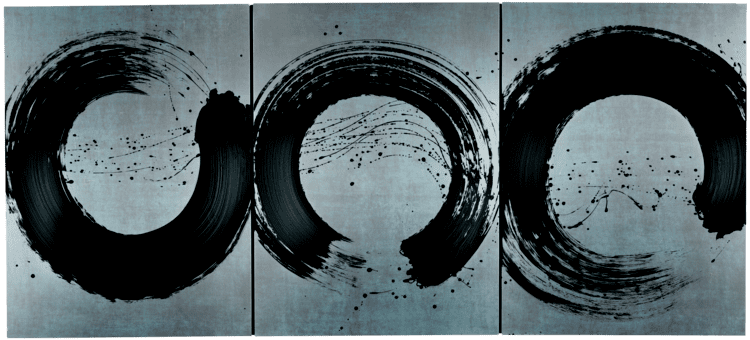
In 2014, the Pinakothek der Moderne of Munich invited Verdier to create an installation of seven works on the theme of transformation. Entitled Mélodie du réel, it was presented at the Herrenchiemsee Palace, together with key works by German and American artists from the museum’s permanent collection. Also that year, the city of Hong Kong organized the first retrospective of Verdier's work: over thirty-five paintings and drawings, loaned mainly by public and private collections and covering the last thirty years of her career, were exhibited at Hong Kong City Hall with the support of the French Ministry of Foreign Affairs. Finally, 2014 saw the completion of a 13-meter-high monumental painting inside the entrance to the new Majunga Tower at La Défense in Paris. The work was commissioned by Unibail-Rodamco, under the aegis of architect Jean-Paul Viguier.
In 2013, in the conceptual phase of the new National Art Museum of China (NAMOC) in Beijing, architect Jean Nouvel asked Verdier to assist him, soliciting her thoughts and drawing on her knowledge of dynamism to shape a building that would transpose the simplicity, energy and power of a single brushstroke.
In 2012, Verdier discovered a way to "dematerialize" her brush, leading her to develop a new technique that she called "Walking-Paintings". These new works were first presented in Singapore at Art Plural Gallery. The following year, Galerie Jaeger Bucher in Paris held a solo exhibition featuring this new series.
In 2009, Verdier embarked on an intense period of research and painting. Long fascinated by the strength of the color spectrum but also the mystery of intriguing immobility in works by the 15th century Flemish primitives, she created a large body of sketches and paintings, drawing particular inspiration from six important works: Virgin and Child with Canon van der Paele (1436) and Portrait of Margaret van Eyck (1439) by Jan van Eyck; Death of the Virgin (c. 1481) by Hugo van der Goes; the Moreel Triptych by Hans Memling (1484); and the Simon Marmion diptych Mater Dolorosa and Man of Sorrows (c. 1460).
The Groeninge and Memling museums in Bruges would ultimately exhibit the results of Verdier’s research side by side with their inspirations in the museum galleries. Daniel Abadie acted as visiting curator and edited a compendium entitled Fabienne Verdier, L'Esprit de la Peinture. A concurrent show of Verdier’s preparatory drawings and notebooks was held at the Erasmus House museum in Brussels. Fabienne Verdier et les Maîtres Flamands, notes et carnets by Alexandre Vanautgaerden was published by Éditions Albin Michel.
As she was expanding her research into spontaneity, Verdier also turned her interest to early Italian frescos and specifically to Quattrocento masters. During this period, the Torlonia family in Rome commissioned her to create a contemporary fresco of monumental paintings (5m x 8m) for a reception room in the family palazzo. Her research related to the project was recorded in studio notebooks and reproduced in Fabienne Verdier, Palazzo Torlonia (2010), by Eric Fouache and Corinna Thierolf.
In 2007, the Musée National d'Art Moderne (Centre Pompidou) in Paris acquired its first Verdier painting. In 2005, drawn by the energy and dynamism of the works shown at Verdier’s first solo exhibition in Switzerland at the Alice Pauli Gallery in Lausanne, the Hubert Looser Foundation of Zurich commissioned her to create a series of paintings to resonate with Abstract Expressionist and Minimalist works in its permanent collection by American artists including John Chamberlain, Donald Judd, Willem de Kooning, Ellsworth Kelly and Cy Twombly.
Several other museums have since included Verdier's Looser Foundation paintings in exhibitions, including "Art of Deceleration, from Caspar David Friedrich to Ai Wei Wei," Kunstmuseum Wolfsburg, Germany, 2011; "My Private Passion – Foundation Hubert Looser," Vienna Kunstforum, 2012; "The Hubert Looser Collection," Kunsthaus Zürich, 2013; and "Formes simples," Centre Pompidou-Metz, France, 2014.
In 2002, following her return to France after nearly a decade of intense work and immersion in China, Verdier wrote about this apprenticeship inside a radically different system of thought. Her account, Passagère du Silence, published by Albin Michel in 2003, won several prizes, was translated into six languages and sold over 230,000 copies.
In 1985, at 22, Verdier left for China to study at the Sichuan Fine Arts Institute in Chongqing. She chose at the same time to work alongside and train with the last great Chinese painters who had survived the Cultural Revolution, whom she persuaded to transmit their mastery of spontaneous painting and aesthetic theories despite continued bans. After becoming the first foreign woman to be awarded a post-graduate diploma in fine arts by the institute, Verdier began to progressively create her own new abstract painting.
Creative process
Fabienne Verdier’s creative process most often involves three phases. First, she records her research, thoughts and observations in notebooks, sketches and inks on paper. Then she prepares the canvas by applying several layers of pigment and glaze in order to obtain the desired degree of vibration, saturation and depth of color. Finally, standing directly on the stretcher and using tools of her own invention, she shapes the paint matter to express fundamental life forces.
Solo
2016 Patrick Derom Gallery, Brussels, Belgium
2016 Waddington Custot Galleries, London, United Kingdom
2015 Galerie Alice Pauli, Lausanne, Switzerland
2014 Retrospective, Le French May, City Hall, Hong Kong, curated by Daniel Abadie
2013 Galerie Jaeger Bucher, Paris, France
2013 “Fabienne Verdier, L’Esprit de la Peinture, Hommage aux Maîtres Flammands”, Groeninge Museum and Hans Memling Museum, Bruges, Belgium, curated by Daniel Abadie
2013 Art Plural Gallery, Singapore
2009 Galerie Jaeger Bucher, Paris, France
2007 Galerie Alice Pauli, Lausanne, Switzerland
2005 Galerie Alice Pauli, Lausanne, Switzerland
Group
2017 “Passion de l'Art”, Musée Granet, Aix-en-Provence, France
2017 “Restless Gestures”, National Museum of Art, Architecture & Design, Oslo, Norway
2017 “Fabienne Verdier Meets Sigmar Polke. Talking Lines”, Pinakothek der Moderne, Munich, Germany, curated by Bernhard Maaz and Corinna Thierolf
2016 “Collection Looser – Museum Folkwang, A Dialogue”, Museum Folkwang, Essen, Germany, curated by Mario von Lüttichau and Florian Steininger
2016 “The World Meets Here”, Custot Gallery, Dubai, United Arab Emirates
2015 “Köningsklasse III”, organised by Pinakothek der Moderne, Munich, at Herrenschiemsee Palace, Bavaria, Germany, curated by Corinna Thierolf
2014 “Formes Simples”, Centre Pompidou-Metz, France, curated by Jean de Loisy
2014 “Köningsklasse II”, organized by Pinakothek der Moderne of Munich at Herrenschiemsee Palace, Bavaria, Germany, curated by Corinna Thierolf
2013 “The Hubert Looser Collection”, Kunsthaus, Zurich, Switzerland, curated by Philippe Büttner
2012 “My Private Passion – Foundation Hubert Looser”, Kunstforum, Vienna, Austria, curated by Florian Steininger
2011 “Art of Deceleration, from Caspar David Friedrich to Ai Wei Wei”, Kunstmuseum, Wolfsburg, Germany, curated by Markus Brüderlin
2009 “Elles@Centre Pompidou”, Musée National d’Art Moderne, Centre Georges Pompidou, Paris, France, curated by Camille Morineau
